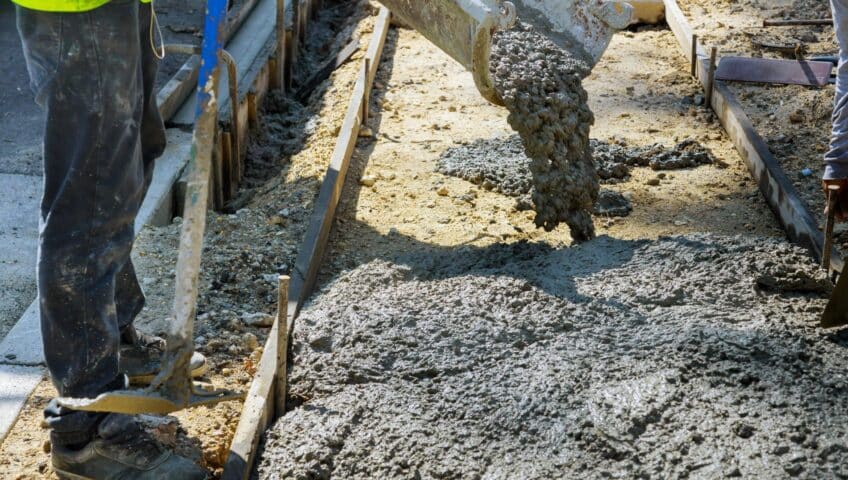In New Westminster, BC, having well-prepared curbs and sidewalks is essential for both safety and aesthetics. Proper preparation ensures that these structures can withstand daily wear and tear, as well as extreme weather conditions. Poorly made curbs and sidewalks can lead to accidents and costly repairs, so it’s important to get it right from the start.
We specialise in curb and sidewalk preparation, from initial grading to final paving. This process involves several key stages, each crucial for creating a durable and safe surface. By following these steps, we ensure that the finished product meets all quality and safety standards. In this article, we’ll guide you through the stages of curb and sidewalk preparation, focusing on what makes this process successful.
Understanding each step in the preparation process helps set expectations and ensures that all aspects are covered. From planning and grading to using the right equipment and materials, each element plays a role in the overall quality of the project. Whether you are a property owner or a construction professional, knowing these stages will help you appreciate the work that goes into creating safe and long-lasting curbs and sidewalks.
Importance of Proper Curb and Sidewalk Preparation
Proper curb and sidewalk preparation is vital for several reasons. Firstly, it ensures the safety of pedestrians. Well-built sidewalks reduce the risk of trips and falls, making public spaces safer for everyone. This is especially important in busy areas where foot traffic is high.
Secondly, high-quality curbs and sidewalks contribute to the overall appearance of a neighbourhood. They add to the well-kept look of an area, boosting property values and community pride. Imagine walking through a neighbourhood with cracked, uneven sidewalks compared to one with smooth, well-maintained paths. The difference is clear and noticeable.
Finally, good preparation extends the lifespan of the sidewalks and curbs. Properly constructed curbs and sidewalks are better able to withstand heavy use and harsh weather conditions. This means fewer repairs and replacements over time, saving money and reducing disruptions.
Initial Steps: Planning and Grading
Before any physical work begins, proper planning and grading are essential. Planning involves measuring the area, assessing the soil, and determining the layout. This stage sets the groundwork for the entire project and helps identify any potential issues early on.
Grading is the next step, which involves shaping the land to ensure proper drainage and stability. Poor grading can lead to water pooling on the sidewalk, causing cracks and damage over time. To avoid these issues, the ground must be levelled correctly, allowing water to flow away from the surface.
Part of the grading process also includes removing any debris, rocks, or roots that could affect the stability of the sidewalk. This prepares the area for the next stages of construction and ensures that the final product will be stable and durable. Proper grading helps create a strong foundation for the pavement, making it an indispensable step in curb and sidewalk preparation.
Essential Equipment and Materials
Using the right equipment and materials is key to successful curb and sidewalk preparation. Firstly, having the correct machinery is vital. Graders and compactors are essential for preparing the ground. Graders help level the soil, while compactors ensure the soil is tightly packed, providing a solid base for the concrete.
Another necessary piece of equipment is a concrete mixer. Mixing concrete on-site ensures it is fresh and of the right consistency. Fresh concrete sets better and offers greater durability. Additionally, forms or moulds are needed to shape the concrete for curbs and sidewalks, helping achieve the precise edges and angles required for a neat finish.
High-quality materials are equally important. Using grade-A concrete ensures the pavement can withstand daily wear and weather changes. Reinforcement materials like steel rebar add extra strength, preventing cracks and breaks over time. Also, waterproofing agents and sealants protect the concrete from water damage, extending its life.
Not to be overlooked, good quality gravel and sand form the substrate on which the concrete is poured. These materials aid in proper drainage and prevent the soil beneath from shifting. By investing in the right equipment and top-notch materials, we lay the groundwork for a durable and safe sidewalk.
Step-by-Step Construction Process
The construction process for curbs and sidewalks involves several crucial steps. Firstly, we begin by excavating the area. This step involves digging to the required depth and removing any unwanted materials like rocks or roots. Proper excavation ensures the ground is ready for the next steps.
Next, we set up forms or moulds to shape the concrete. These forms are secured to keep the concrete in place while it sets. Before pouring the concrete, we lay a base layer of gravel and sand to help with drainage and provide stability. This base layer is compacted to ensure it is firm and level.
Once the base is ready, we pour the concrete into the forms. At this stage, it’s important to work quickly to ensure the concrete doesn’t set before it is properly shaped. We use tools like trowels and screeds to smooth the surface and remove excess material. Installing reinforcement like steel rebar at this point adds extra strength to the structure.
After shaping and smoothing the concrete, we leave it to cure. Curing is a critical step that involves keeping the concrete moist for several days to help it achieve maximum strength. Finally, once the concrete has cured, we remove the forms and apply any necessary sealants to protect the surface from water and wear.
Conclusion
Proper curb and sidewalk preparation is essential for ensuring safety, durability, and aesthetic appeal in New Westminster, BC. From initial planning and grading to using high-quality equipment and materials, every step in the process plays a vital role in the final outcome. We must not cut corners or skip stages; doing so compromises the quality and longevity of the curbs and sidewalks.
Understanding each stage of preparation helps ensure a successful project. By following these well-defined steps, we create structures that will stand the test of time and provide safe, reliable pathways for pedestrians. Whether you are a property owner or a contractor, appreciating the importance of each phase can lead to better decision-making and more effective planning.
For expert curb and sidewalk preparation that meets all quality and safety standards, contact New Wave Earth Works, a civil construction company. Let our experienced team help you create durable, long-lasting pathways for your project.


